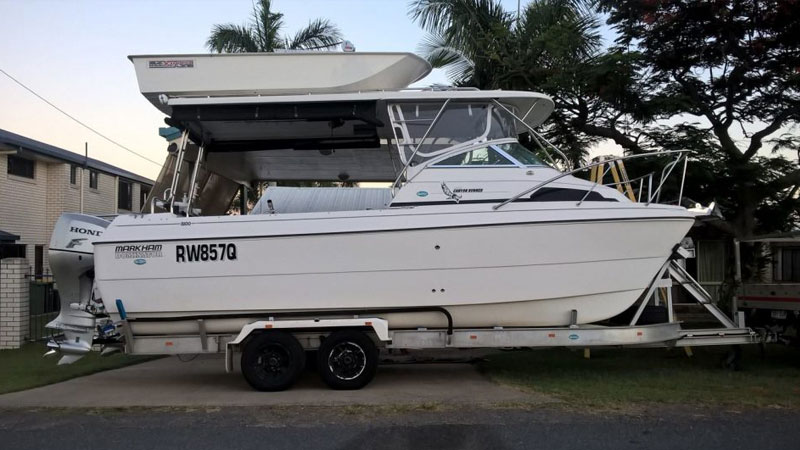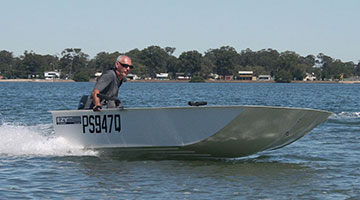There are 2 main types of tender boats on the market. Inflatable tenders and fibreglass tenders. There are also third type, the plastic tender. Picking the right tender at first sounds like an easy task. But once you start considering weights, dimensions and application, the decision on a small tender becomes a big question.
Whether it a mother ship, power boat or yacht tender, these little boats are expected to perform with the bare minimum of maintenance. Tenders are also used for a wide range of applications, from carrying passengers, fishing to the everyday grocery shopping.
Fibreglass vs Aluminum vs Inflatable Tender Boats
Firstly, lets compare fibreglass and inflatable tenders.
Inflatable Tenders
Most boaters chose an inflatable tender because of their price point. A cheap inflatable can be purchased from ebay for under $2000. And there’s nothing wrong with them, they provide a stable platform for grocery shopping. Infact they are so stable that dipping one side under the water and taking on water they are unlikely to sink.
The downside to inflatable tender boats is that they can leak air and become swamped. Air leaks can be caused a number of different things, but fishing from an inflatable is not recommended!
Cheap inflatable tenders are also prone to UV degradation. Which means overtime the PVC fabric will deteriorate making it easier for punctures. Leaking inflatable tenders can be a nightmare, as pinholes can be hard to find.
Aluminium Tenders
The biggest advantage of an aluminium tender is they are low maintenance and tough. Aluminium is resistant to UV degradation and saltwater. Therefore they have a pretty good lifespan.
The downside of aluminium tenders is their weight, material fatigue, rough rides, unstable and they can definitely sink. If an aluminium boat is dented or cops a sharp blow, metal fatigue will eventually lead to failure. Dents and holes can be fixed by a specialized and expensive aluminium.
Fibreglass Tenders
Fibreglass tender boats, if designed well can be stable. They have a softer ride than an aluminium boat, with less moving underneath than a inflatable boat. They also offer low maintenance since as they are fully sealed. The fibreglass and epoxy is generally painted with a 2 pack paint to help with UV resistance. Otherwise polyester resin is used for UV resistance. For the most part, they are unsinkable, and offer positive buoyancy.
Fibreglass boats are also easily repairable. Epoxy resin is readily available and easy to work with.
Another benefit of Fibreglass it is a light-weight material. Compared to an aluminium tinnie, a fibreglass boat can offer the same space, better stability, lower maintenance at a much lower weight.
Dimensions
A trap many yacht owners get caught in, is not thinking about the dimensions of a tender with the outboard attached. A 12-foot tender can easily take up 13 and half foot with outboard attached. Its important to speak to the yacht manufacturer or company who installed the davits or hydraulic swim to recommend the right sized tender.

Small Boats Big Fun
Probably the most important factor when consider a small boat as a tender, is to think about what you’re going to use it for. Will it sit on the davits and rarely be deployed? Or do you want to go spear fishing in shallow reefs, mud crabbing up a creek or just grocery shopping?
If you’re planning on taking the kids or passengers then it’s a good idea to consider a larger more comfortable tender. Or if you just want something that will last a long time, with low maintenance then consider paying extra for a fibreglass tender.
Tender price does matter
You really do get what you pay for when purchasing a tender or small boat. Being cheap or going too small is probably the main mistake people make. Generally a tender is an after thought, or a new yacht owner has already spent enough money. But in the long run, having to buy an inflatable every few years is going to cost just as much.

Benefits of an EzyTopper tender
Our EzyTopper’s are designed to be light, stable, fast and tough. Originally designed for the car topper market, we’ve found they also make the perfect tender boat. Davits can be placed almost wherever they are required during the build process. The infused form resin construction also means they have a positive buoyancy and unsinkable, even if they are damaged. Easy to repair with epoxy resins. They are also smooth on the water, with the shock being absorbed through the entire boat.





